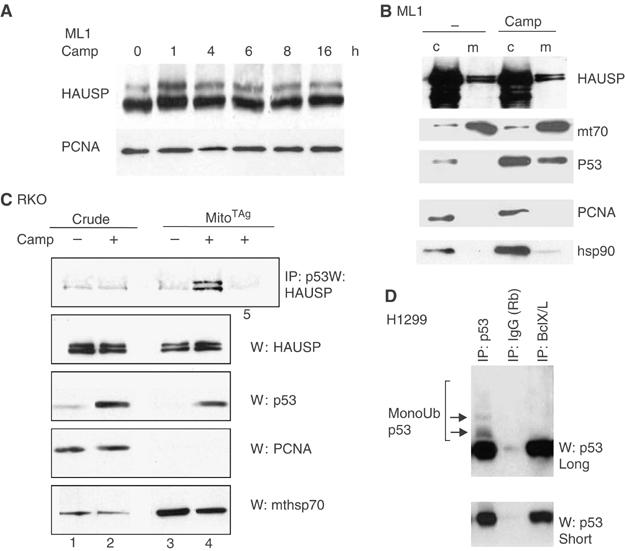Figure 5.

HAUSP is constitutively located at the mitochondria and engages in a stress-induced HAUSP–p53 complex upon p53 translocation. (A, B) HAUSP is constitutively expressed in cells and does not respond to stress. (A) Crude lysates of ML1 cells treated as indicated were immuoblotted with HAUSP antibody. PCNA is used as loading control. (B) HAUSP is also constitutively expressed at the mitochondria. Mitochondrial and crude lysates of ML1 cells treated as indicated were immunoblotted for HAUSP. A 10 μg measure of total protein per lane in (A) and (B). (C) Endogenous HAUSP forms a stress-inducible complex with translocated p53 at the mitochondria. Mitochondrial and crude lysates of RKO cells treated as indicated were immunoprecipitated for p53 (lanes 1–4) and blotted for HAUSP. Lane 5: negative control, the same amount of mitochondria were immunoprecipitated with anti-T antigen antibody. Lower panels: direct immunoblots of aliquots (5 μg each) from the IP input. (D) Mitochondrial p53, when complexed with BclX/L, is selectively non-ubiquitylated. p53–BclX/L complexes contain only non-ubiquitylated p53, whereas the total p53 pool contains detectable ubiquitylated p53 species. H1299 cells cotransfected with p53, MDM2 and BclX/L. p53 immunoprecipitations from parallel aliquots of the same lysate with 1 μg of the indicated antibodies.
